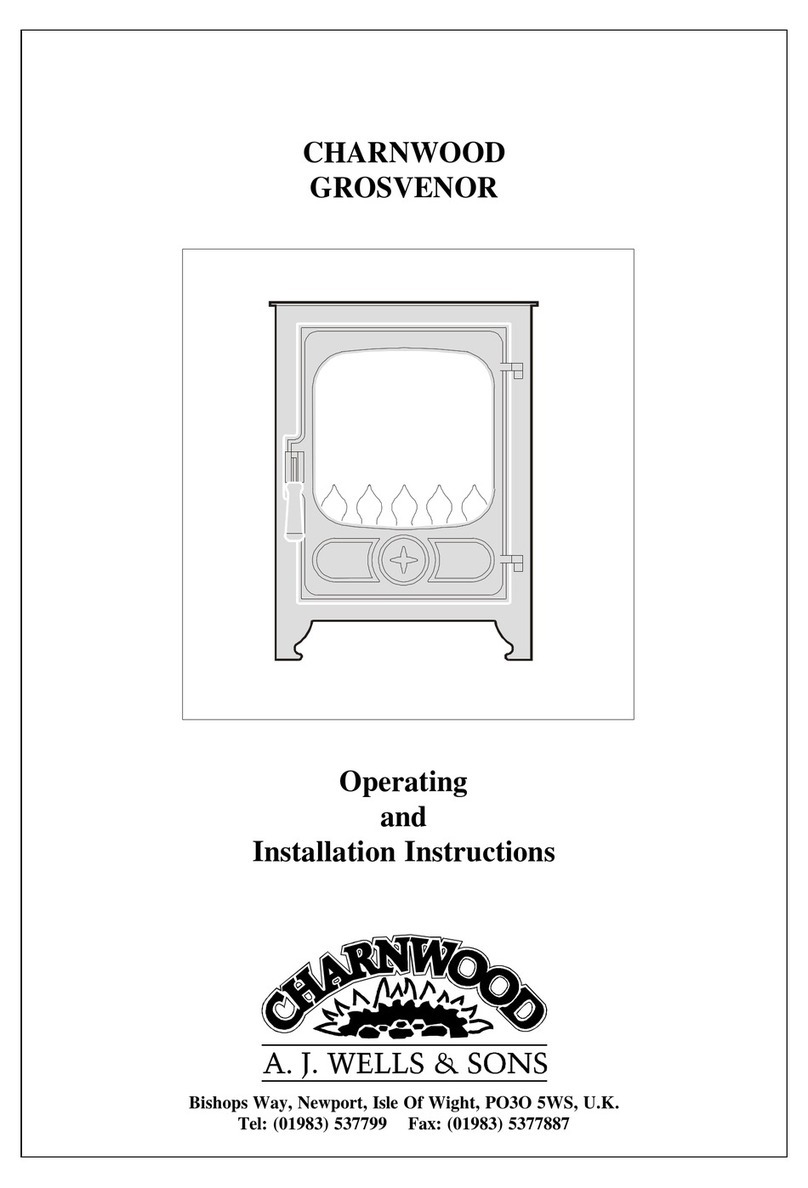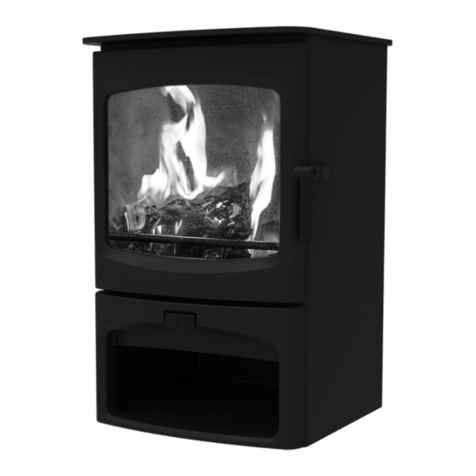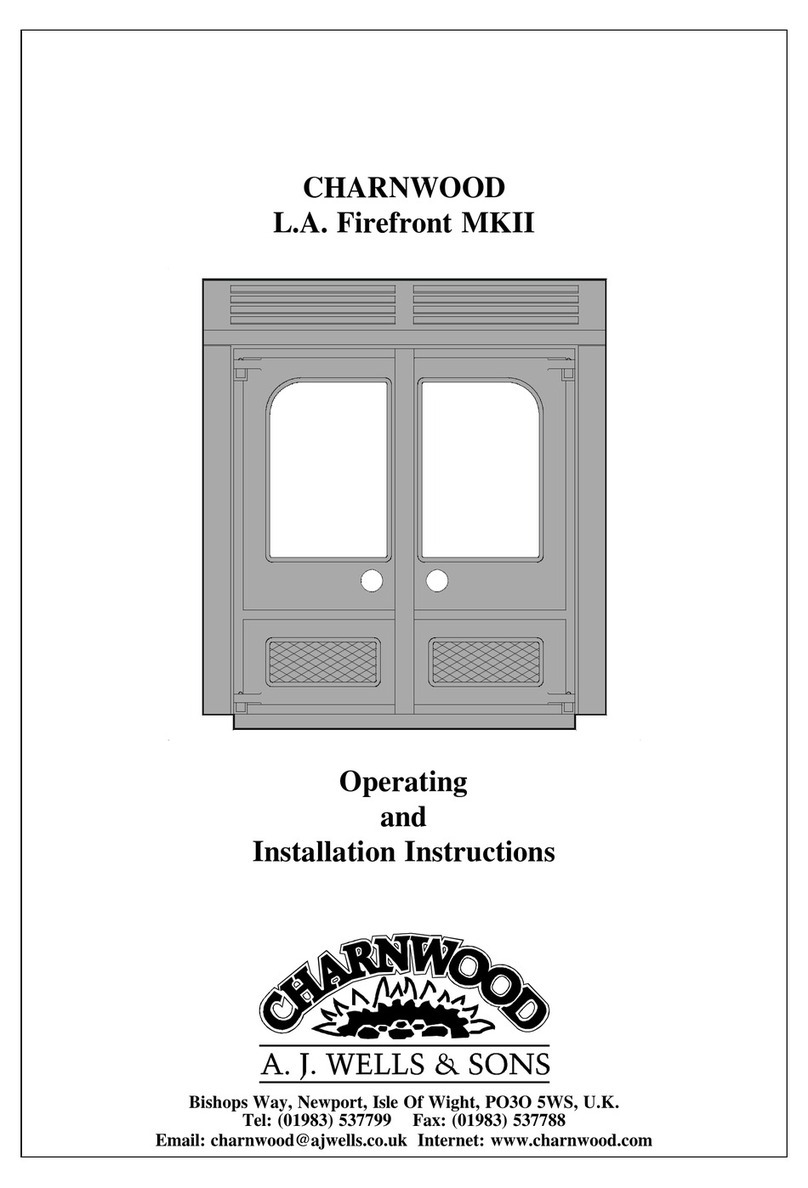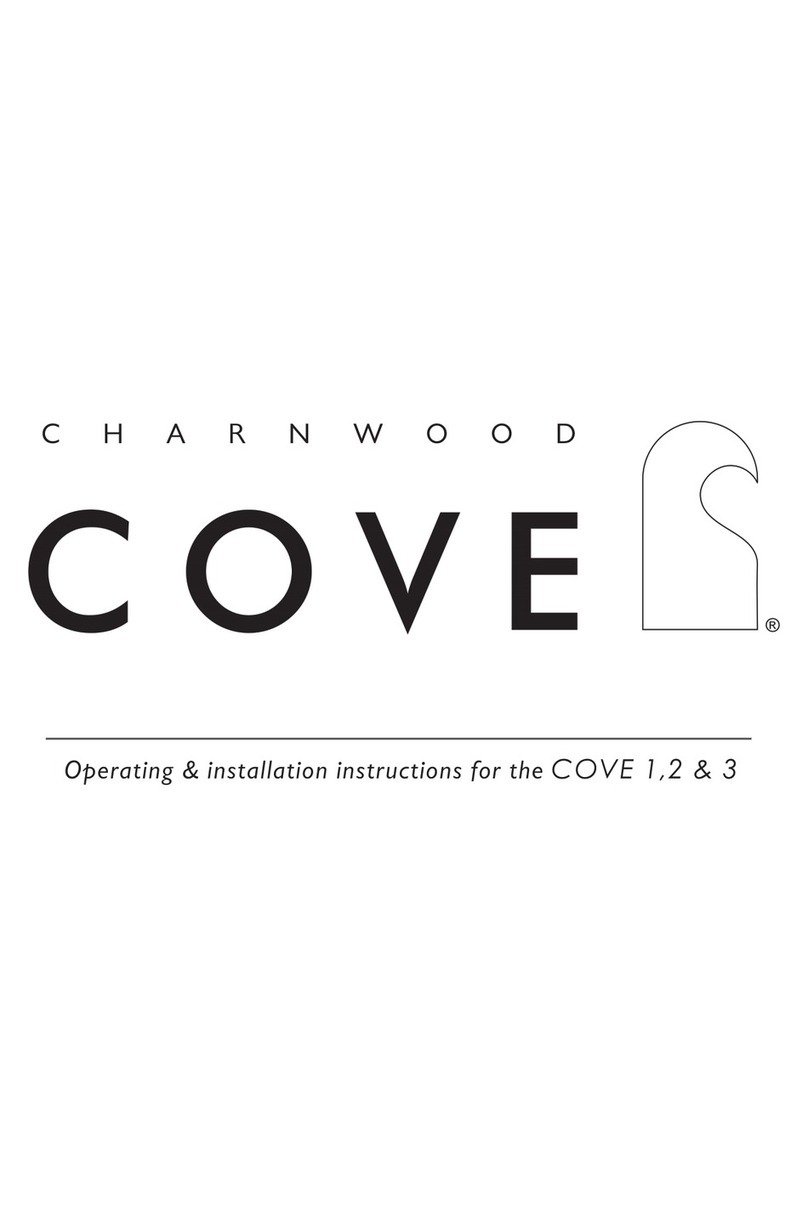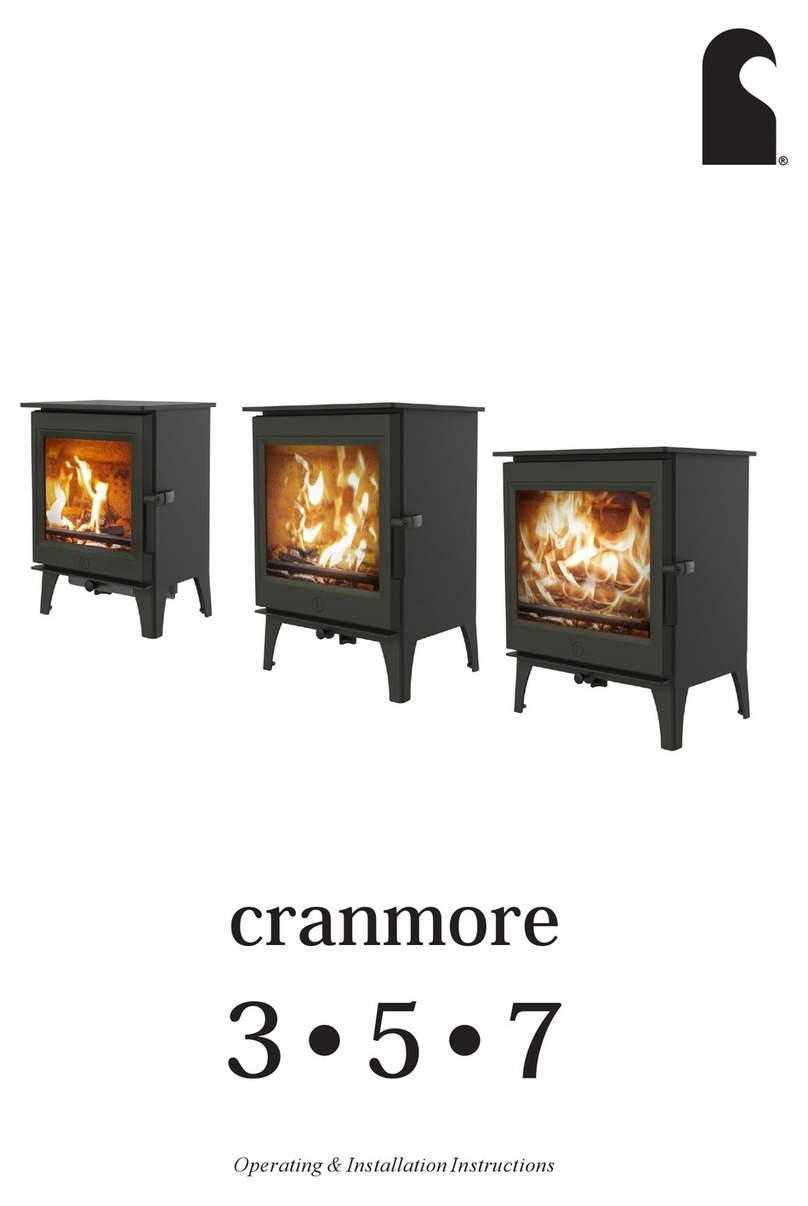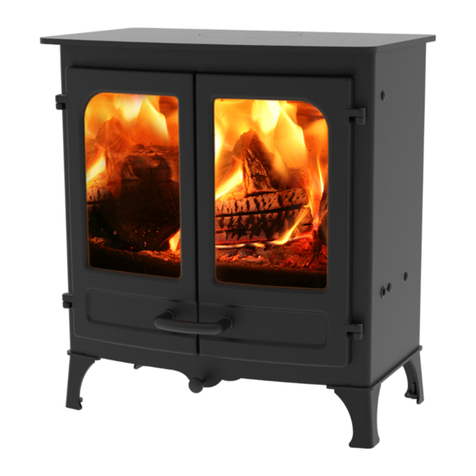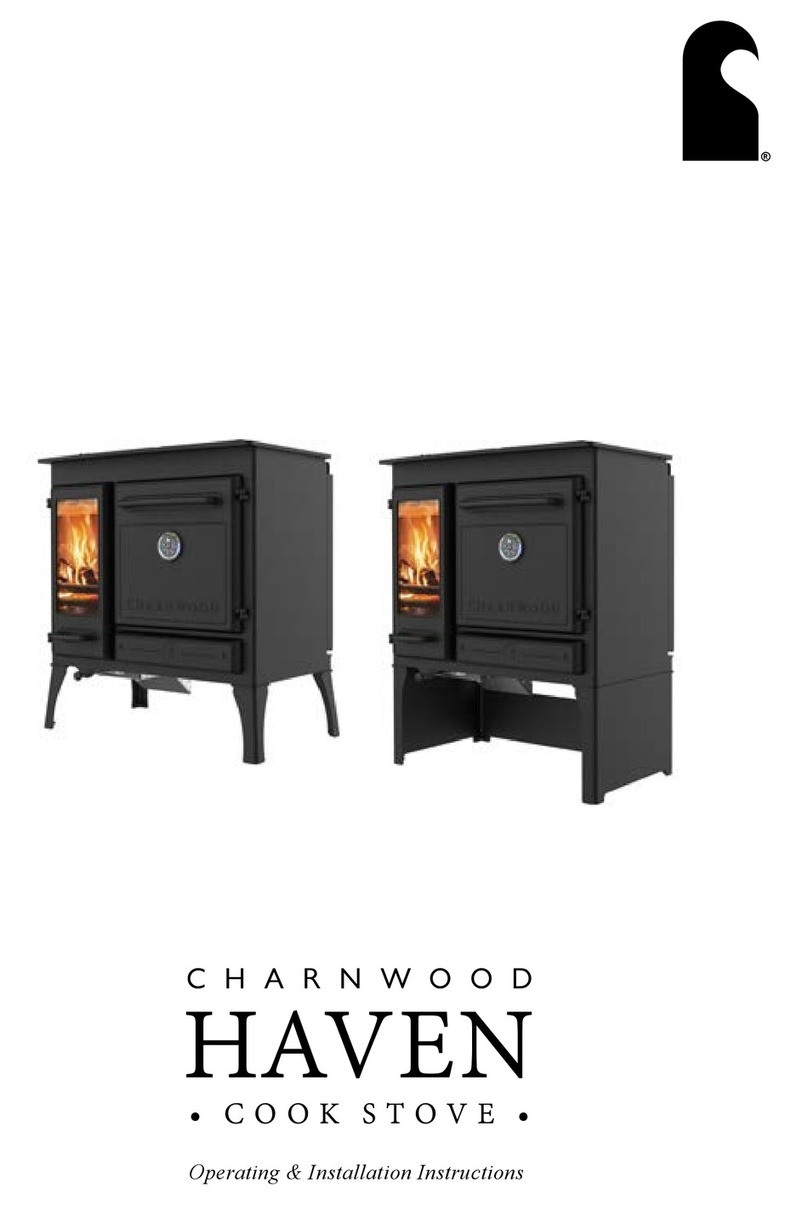SPECIAL POINTS WHEN
BURNING COAL
When loading the stove take care not to smother the fire, instead fill
the firebox in two stages waiting between each stage for the flames
to appear above the fire.
After a period of slumbering always open the air control up to
maximum and wait until flames appear above the fuel bed before
opening the doors.
Burning coal will produce more soot deposits than other fuels,
especially if the fire is run at low levels for long periods. It is therefore
vital to clean the throat plate regularly. It will also be necessary to
sweep the chimney more frequently than with other fuels.
SPECIAL POINTS WHEN
BURNING WOOD AND PEAT
The grate should be kept in the wood burning position and should
not be riddled until the ash becomes so deep that it begins to block
the passage of air into the firebox at the sides or back of the grate.
When this is the case do not remove all of the ash using the riddling
mechanism but keep a layer about half an inch thick as this enables
the wood to burn more effectively. When lighting the fire a few small
dry logs with a good amount of kindling will help to get the fire up to
temperature quickly.
OVERNIGHT BURNING
For overnight burning the fire doors must be closed.
When burning solid fuel the ashpan should be emptied and the fire
riddled. The air control should be opened up to maximum for a brief
period and then, when the fire is burning brightly, it should be loaded
with fuel. When the new fuel has ignited, push the air control almost
fully in. Some experimentation may be necessary to find the setting
most suitable for the particular fuel used and the draw on the
chimney. To revive the fire, empty the ashpan, riddle, and open the
air control to maximum. When the fire is burning well load on more
fuel as necessary and move the air control to the desired setting.
When burning wood use large logs rather than small ones. Proceed
as above, but do not riddle the fire either when shutting down or
reviving the fire.
MAINTENANCE
Cleaning
The stove is finished with a high temperature paint which will
withstand the temperatures encountered in normal use. This may be
cleaned with a damp lint-free cloth when the stove is cold. Should re-
painting become necessary then special high temperature paints are
available from your supplier or from Charnwood.
Cleaning the Glass
The glass in the doors is a special ceramic glass which is able to
withstand high temperatures. Before cleaning the glass open the
doors and allow them to cool. Clean the glass using a damp cloth and
then wipe over with a dry cloth. Any stubborn deposits on the glass
may be removed with a proprietary stove glass cleaner or ceramic
hob cleaner. Some deposits on the glass may be burnt off simply by
running the fire at a fast rate for a few minutes. Do not use abrasive
cleaners or pads as these can scratch the surface which will weaken
the glass and cause premature failure. Aerosol spray cleaners should
not be used near the appliance whilst it is under fire.
When Not in Use
If the fire is going to be out of use for a long period (for instance in
the summer) then to prevent condensation, and hence corrosion, the
air control should be left fully open and the fire doors left ajar. It is
also advisable to sweep the chimney and clean out the fire. Spraying
the inside of the doors and firebox with a light oil, such as WD40,
will also help to keep all internal parts working well.
After long periods where the fire has been out of use, the chimney
and appliance flueways should be cleaned before lighting.
Door Seals
For the fire to operate correctly it is important that the door seals
are in good condition. Check that they do not become worn or
frayed and replace them when necessary.
Servicing
It is recommended that the fire is serviced once a year to keep it in
first class working order. After cleaning out the firebox thoroughly,
check that all internal parts are in good working order, replacing any
parts that are beginning to show signs of wear. Check that the doors
seals are in good condition and that the doors seal correctly. A
servicing guide is available on request.
THROAT PLATE AND FLUEWAY
CLEANING
It is important that the throat plate and all the stove flueways are kept
clean. They should be checked approximately once a week, by
looking up into the firebox for signs of soot or fly-ash on the throat
plate and at the sides of the firebox. If there are signs of a build up of
Page 5
Island 8.03

